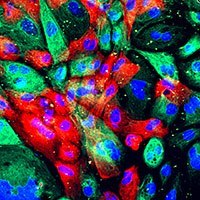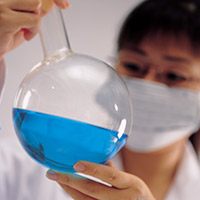Metals in Biology Scientific Interest Group
Metals are critical to a dizzying array of biological functions. Recent proteomic studies indicate that up to one-third of cellular proteins contain a bound metal cofactor, yet only a minority of these cofactors have been identified. Metal ions also bind and modulate the structure and function of RNA, by potentially an equally intriguing number of ways. By virtue of their variable coordination properties and redox behavior, metal ions often carry out unique functions in biology. However, metal ions such as copper and iron can be double-edged swords, because when unsequestered, they can generate toxic radical species that can wreak immense amount of damage to proteins, nucleic acids and lipids. Consequently, cellular systems devote a considerable amount of resources for the trafficking, chaperoning and homeostasis of essential metal ions. Malfunctioning of one or more elements of these machinery cause numerous devastating human diseases, such as hemochromatosis, Friedreich ataxia, Wilson disease, and Menke’s disease. In addition, metal ions have proven to be valuable tools in medicine, such as magnetic resonance contrast imaging reagents and anti-cancer therapeutics.
Although there are a number of active research groups in the NIH intramural research program whose interests span one or more aspects of the biology of metals, there is no scientific interest group dedicated to this purpose. Although these laboratories are at different parts of the campus, housed in different buildings and hosted by a variety of parent institutes, they have already formed a thriving journal and data club that has been meeting informally for many years. Our scientific interest group dedicated to metal biology further unites these different groups, providing a platform for interaction and building future collaborative projects; thus, this new interest group facilitates interactions between NIH researchers at the forefront of metallobiology and expose trainees to a wider spectrum of problems, approaches, and techniques. We plan to host one seminar every two months and continue with our biweekly journal clubs. For more information on the SIG, contact Anirban Banerjee, anirban.banerjee@nih.gov.
We are hosting two seminars in the coming months:
Stephen J. Lippard
Department of Chemistry, MIT
September 17, 2018
Bldg 40, 3-4 pm
Title: To be announced
Squire J. Booker
HHMI and Departments of Chemistry and Biochemistry and Molecular Biology, Penn State
Wednesday Afternoon Lecture Series
May 1, 2019
Building 10 (Masur), 3 pm
Title: To be announced
Mailing List
To join the Metals in Biology Scientific Interest Group mailing list, please visit the Metals in Biology Scientific Interest Group Listserv home page, then click the “Subscribe or Unsubscribe” link in the right sidebar.
Chair
- Anirban Banerjee, Ph.D., NICHD
Scientific Focus Areas
This page was last updated on Thursday, August 12, 2021


